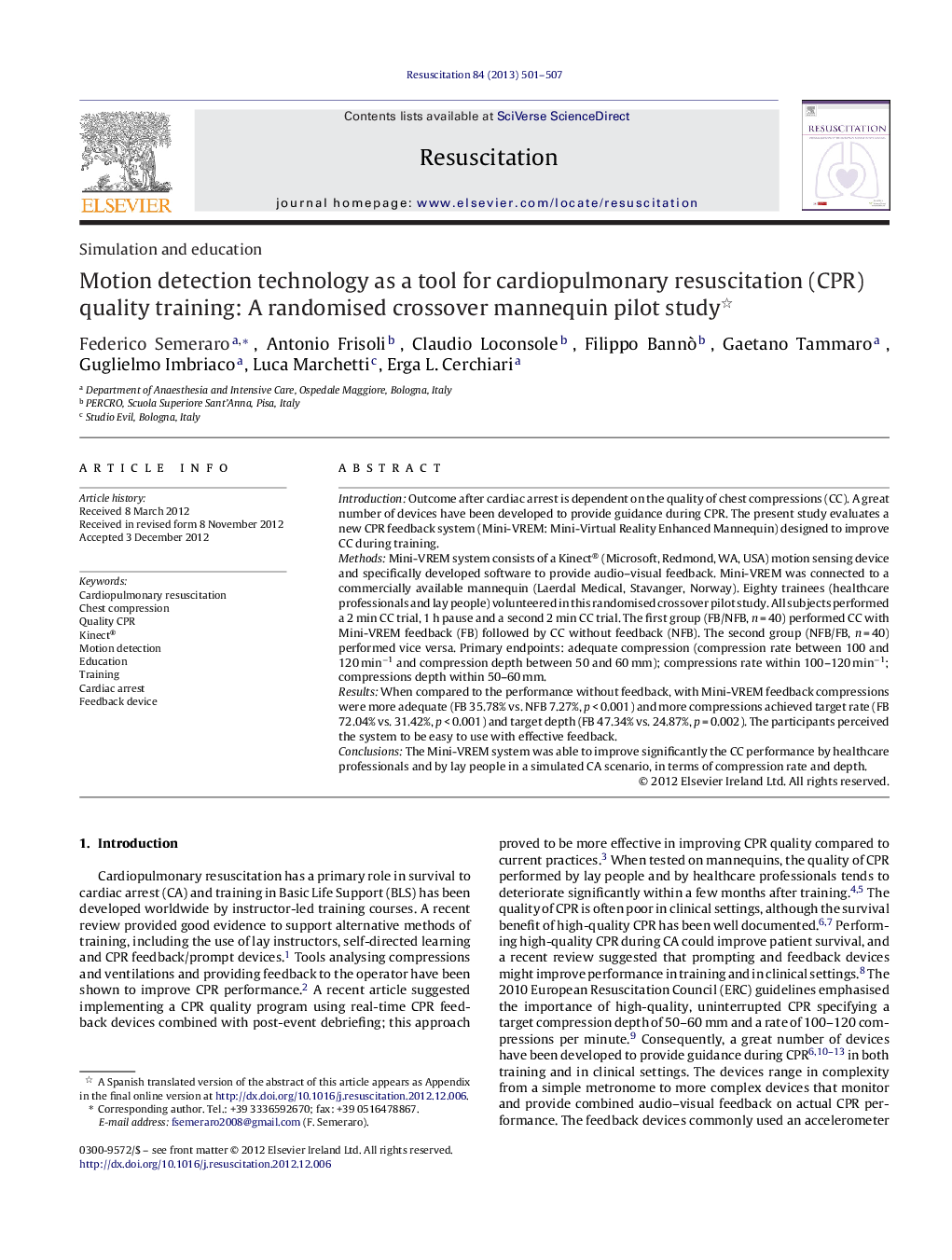| Article ID | Journal | Published Year | Pages | File Type |
|---|---|---|---|---|
| 3008121 | Resuscitation | 2013 | 7 Pages |
IntroductionOutcome after cardiac arrest is dependent on the quality of chest compressions (CC). A great number of devices have been developed to provide guidance during CPR. The present study evaluates a new CPR feedback system (Mini-VREM: Mini-Virtual Reality Enhanced Mannequin) designed to improve CC during training.MethodsMini-VREM system consists of a Kinect® (Microsoft, Redmond, WA, USA) motion sensing device and specifically developed software to provide audio–visual feedback. Mini-VREM was connected to a commercially available mannequin (Laerdal Medical, Stavanger, Norway). Eighty trainees (healthcare professionals and lay people) volunteered in this randomised crossover pilot study. All subjects performed a 2 min CC trial, 1 h pause and a second 2 min CC trial. The first group (FB/NFB, n = 40) performed CC with Mini-VREM feedback (FB) followed by CC without feedback (NFB). The second group (NFB/FB, n = 40) performed vice versa. Primary endpoints: adequate compression (compression rate between 100 and 120 min−1 and compression depth between 50 and 60 mm); compressions rate within 100–120 min−1; compressions depth within 50–60 mm.ResultsWhen compared to the performance without feedback, with Mini-VREM feedback compressions were more adequate (FB 35.78% vs. NFB 7.27%, p < 0.001) and more compressions achieved target rate (FB 72.04% vs. 31.42%, p < 0.001) and target depth (FB 47.34% vs. 24.87%, p = 0.002). The participants perceived the system to be easy to use with effective feedback.ConclusionsThe Mini-VREM system was able to improve significantly the CC performance by healthcare professionals and by lay people in a simulated CA scenario, in terms of compression rate and depth.
